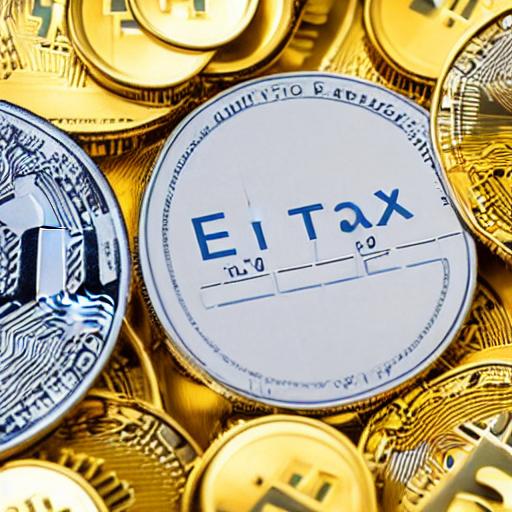Even though tax season is soon coming to an end, investors are still having trouble with cryptocurrency taxes and tax preparation. Many applauded the main outcome of this upgrade following the Shapella upgrade of the Ethereum blockchain, which advanced the eagerly anticipated Ethereum 2.0 upgrade to its next phase. Users who had staked ETH could now withdraw their money for the first time.
Since the Ethereum 2.0 upgrading process had been going on for several years, this means that some depositors and investors did not have access to the money that had been placed, or the staking rewards, for the entire time period. Due to the release of approximately $30 billion in ETH into the market as a result, issues about cryptocurrency taxes naturally arose. What do investors need to know?
For many in the tax world, crypto staking, and specifically staked ETH, has emerged as a contentious topic. The deferral of income tax obligations until staked assets and rewards are actually withdrawn and/or used for an external transaction is supported by several pro-crypto tax and accounting professionals. On the other hand, staking rewards have typically been thought to be taxable upon formation due to the lack of IRS guidelines on the subject pertaining to cryptocurrencies.
It makes sense to look at some of the main problems that staked crypto has produced, even though these unstaked activities won’t appear on tax returns for the majority of people until the filing season starts in early 2024 (for 2023 activities).
Taxes. The release of staked ETH will result in further tax problems and headaches for practitioners and investors alike, leaving aside the tax discussions and concerns surrounding block rewards. Ethereum’s use will probably rise in the future because it serves as the foundation for many Layer 2 apps, including 67% of decentralised finance applications and 76% of non-fungible assets.
The fact that ETH powers many of the emerging applications, as well as smart contracts that allow blockchains to communicate with one another, will result in more complex tax and tax planning scenarios, especially given the possibility that many users who had staked ETH might not be tax preparers or accounting experts. In addition to the 28% collectable tax rate that the IRS has proposed for NFTs itself, for instance, the design, issuance, and governance of an NFT might result in tax liabilities at every stage of the process.
Diverse forms of staking. Staking has been covered extensively in the run-up to the Shapella upgrade, but it’s crucial for investors to understand there are many kinds of staking. Retail investors like passive staking because it closely mirrors how traditional interest products are made at financial institutions. Passive staking is also the sort of staking that is most popular with retail investors. Users of ETH, for instance, can deposit their tokens at either a decentralized protocol or a centralized exchange (such as Coinbase). These staked tokens provide block rewards over time, which accumulate until the depositor releases or withdraws them.
When the depositor is an active validator, active staking occurs, requiring 32 ETH for Ethereum. With proof-of-stake, the amount staked has a direct correlation to the chance of being chosen to validate a block (of transactions). A proof-of-stake blockchain operates as promised through a mechanism known as active staking. In addition to providing the Ethereum blockchain with processing power, these validators (nodes) act as an additional layer of assurance for the accuracy of these data. According to this logic, users that have a significant amount of ETH staked are most motivated to defend the reliability and correctness of the blockchain itself.
Describe a property. What block rewards actually mean is one of the most debatable issues surrounding crypto staking. The Internal Revenue Service has an extraordinarily broad view of what constitutes taxable income, and this expansive perspective has been supported by a number of court rulings. Staking rewards are taxable at the time of creation, according to current IRS policy, which is further supported by the IRS’s failure to provide more guidance or clarity – even during the Jarrett staking case. This perspective views staking rewards as income generated as a result of the staking procedure, valued at its current value, and subject to immediate taxation.
One alternate viewpoint is that the block rewards are newly generated property, which is supported by both certain investors and policy organisations. These policy groups and proponents believe that the newly formed tokens released as block rewards should have the same treatment as crops, which are not taxed until they are sold.
However, there is currently no exception or exception for block rewards, so investors should consider all such rewards to be taxable at the time they are created.
For the majority of investors, taxes may only sometimes make news over the year, but if the ETH market develops further, crypto tax preparation will need to keep up.








